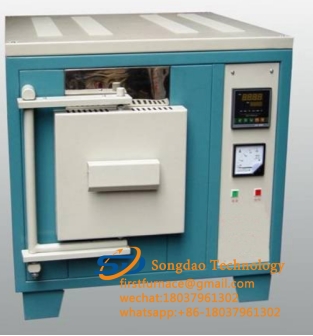- 21
- Dec
प्रायोगिक विद्युत भट्टियों के लिए सिलिकॉन कार्बाइड छड़ों के उपयोग के लिए सावधानियां
Precautions for the use of silicon carbide rods for प्रायोगिक विद्युत भट्टियां
1. इलेक्ट्रिक फर्नेस का उपयोग करते समय, हीटिंग तत्व को नुकसान से बचने के लिए भट्ठी का तापमान लंबे समय तक रेटेड तापमान से अधिक नहीं होना चाहिए। भट्ठी में विभिन्न ज्वलनशील तरल पदार्थ और पिघली हुई धातुओं को डालना मना है।
2. सिलिकॉन कार्बाइड की छड़ कठोर और भंगुर होती है, इसलिए लोडिंग और अनलोडिंग करते समय सावधान रहें।
3. नमी के कारण एल्यूमीनियम-प्लेटेड सिरे को खराब होने से बचाने के लिए सिलिकॉन कार्बाइड की छड़ों को एक सूखी जगह में संग्रहित किया जाना चाहिए।
4. Molten KOH, NaOH, Na2CO3 and K2CO3 decompose SiC at the red heat temperature. Silicon carbide rods will be corroded in contact with alkali, alkaline earth metals, sulfates, borides, etc., so they should not be contacted with silicon carbide rods.
5. The wiring of the silicon carbide rod should be in close contact with the white aluminum head at the cold end of the rod to avoid sparking.
6. The silicon carbide rod reacts with Cl2 at 600°C and reacts with water vapor at 1300-1400°C. The silicon carbide rod is not oxidized below 1000°C, and is significantly oxidized at 1350°C, at 1350-1500°C. A protective film of SiO2 is formed in between and adheres to the surface of the silicon carbide rod to prevent the SiC from continuing to oxidize.
7. जैसे-जैसे सिलिकॉन कार्बाइड रॉड का उपयोग समय बढ़ता है, सिलिकॉन कार्बाइड रॉड का प्रतिरोध मूल्य बढ़ता है, और प्रतिक्रिया इस प्रकार है:
SiC + 2O2=SiO2 + CO2
SiC + 4H2O = SiO2 + 4H2 + CO2
The higher the content of SiO2, the greater the resistance value of the silicon carbide rods. Therefore, the old and new silicon molybdenum rods cannot be mixed, otherwise the resistance value will be unbalanced, which is very unfavorable to the temperature field and the service life of the silicon carbide rods.

